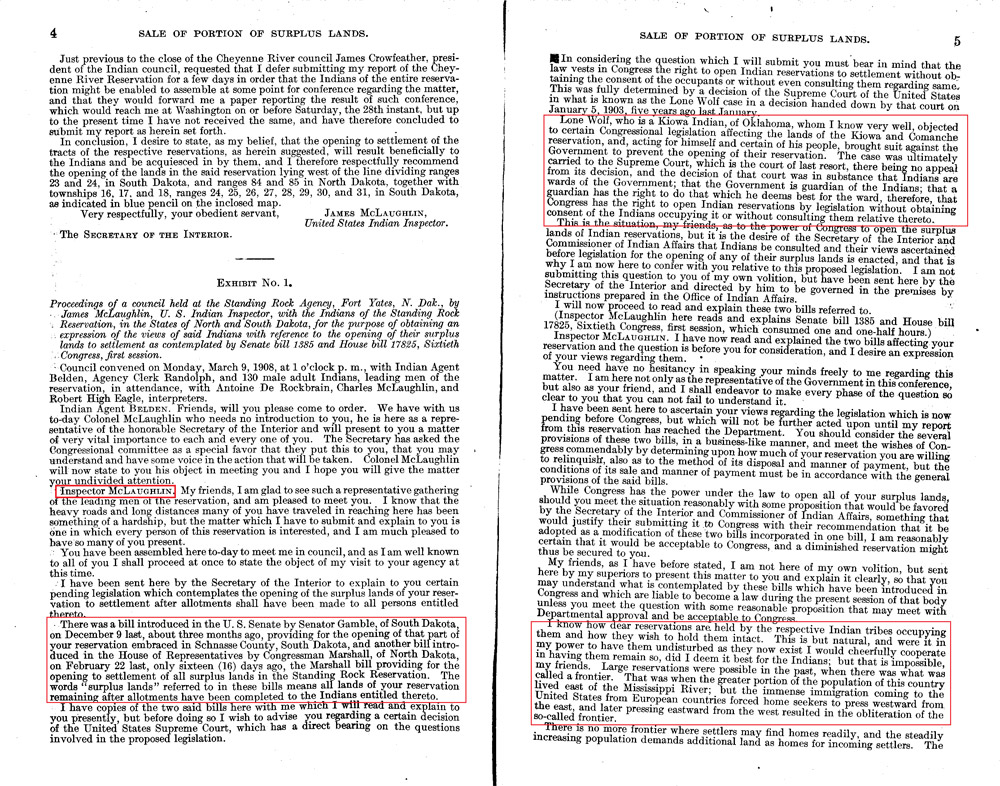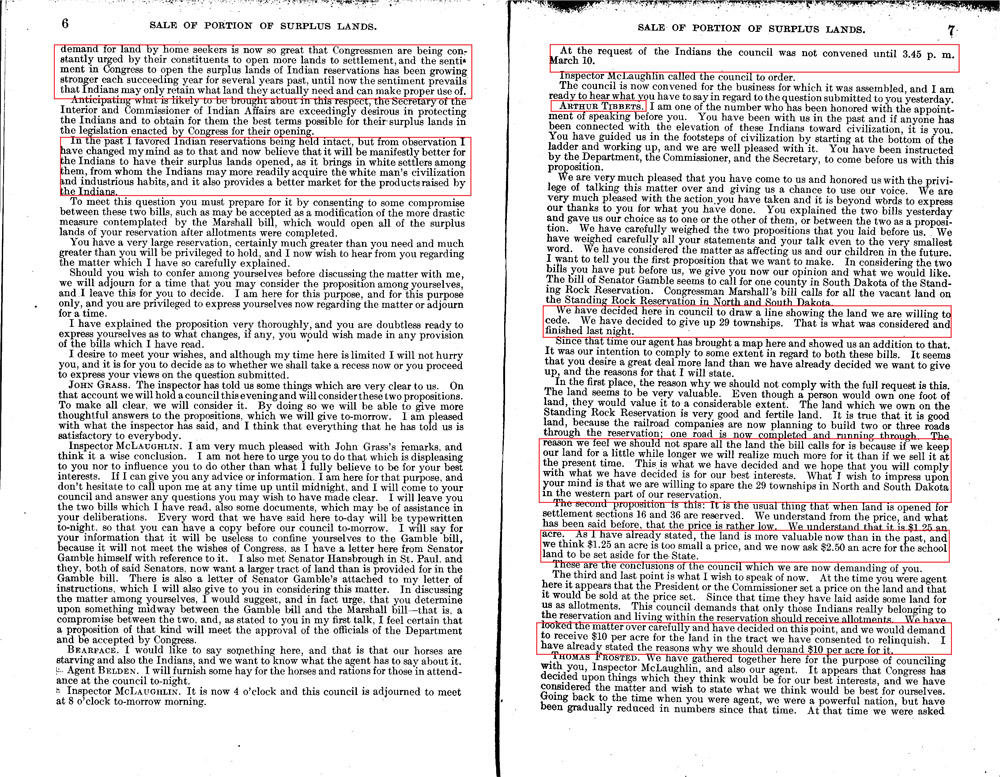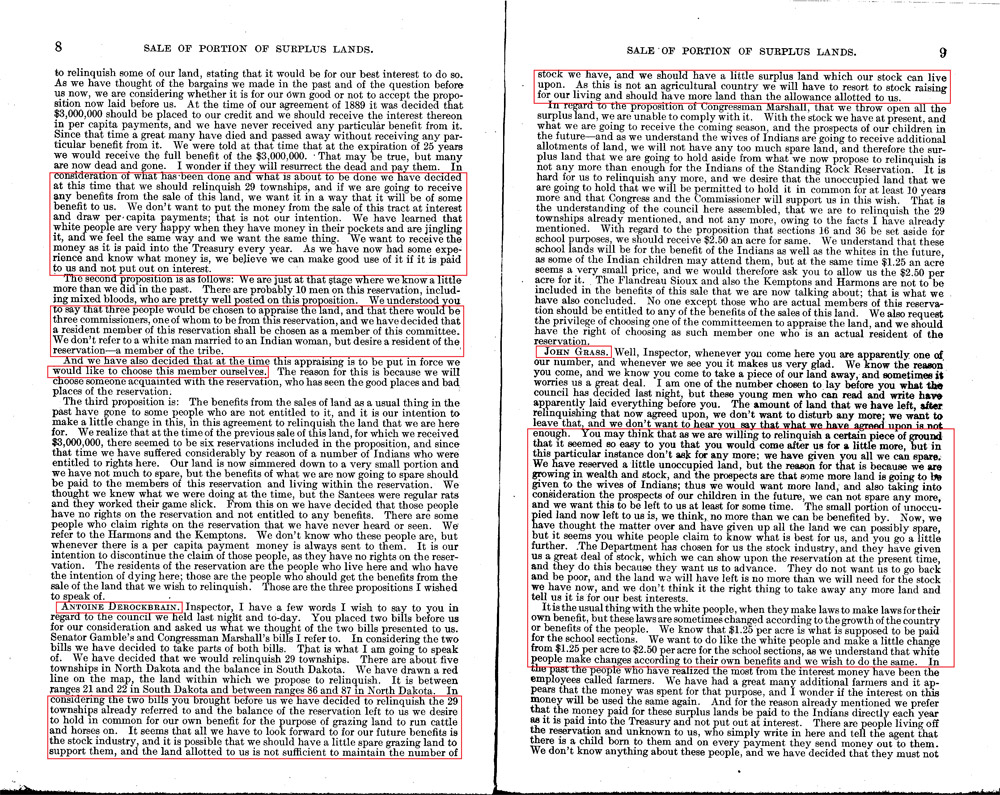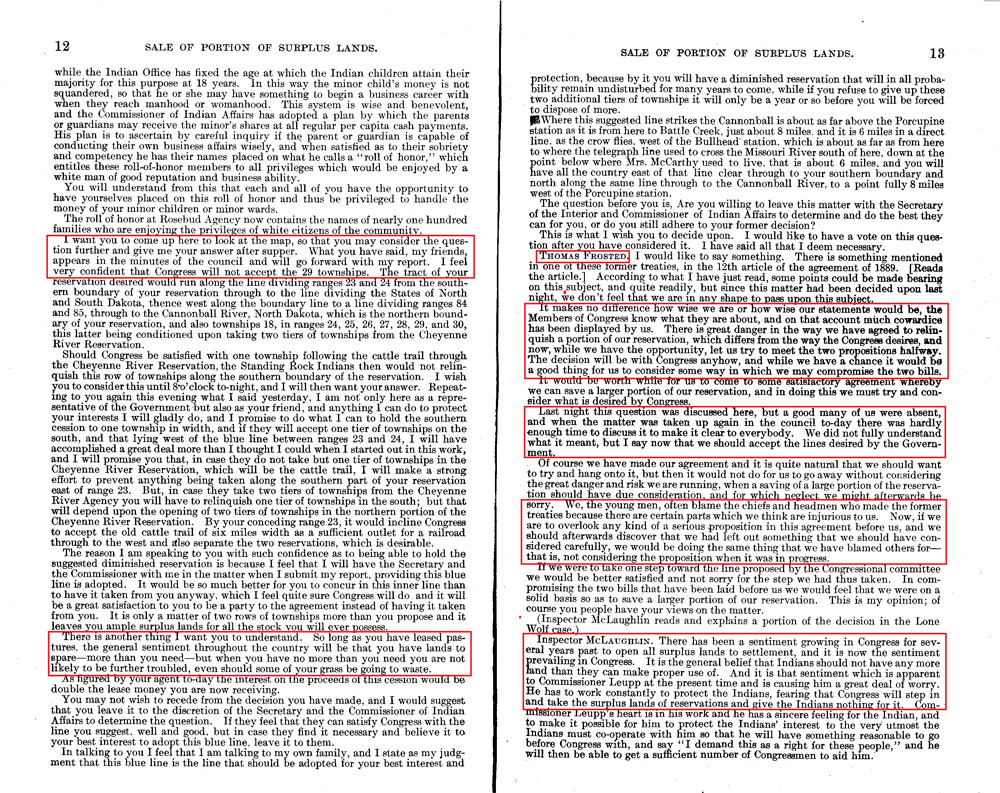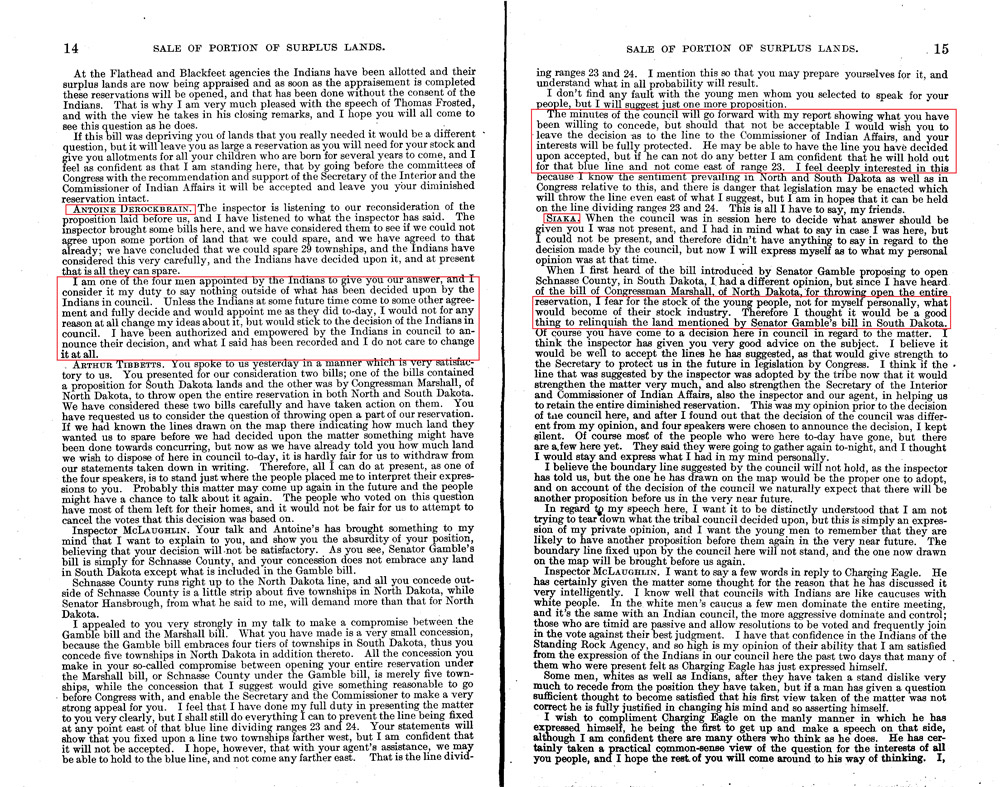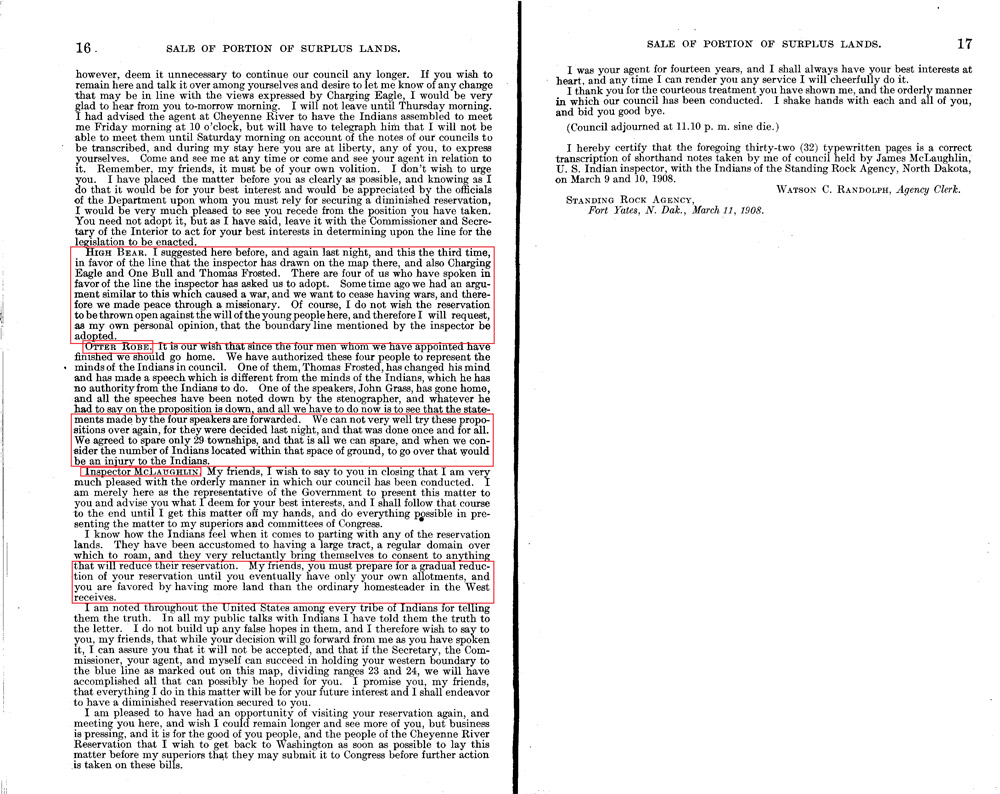In 1908, federal officials, including Major James McLaughlin, met with Standing Rock leaders to discuss the opening of unallotted lands for purchase by non-Indians. The speeches were summarized in a federal document, giving us a record of the views of both the federal government and the tribes.
The men who sat on this council represented the people of the reservation. Some of the men were respected elders such as John Grass (also known as Mato Watakpe or Charging Bear), a Sihasapa Lakota. Others in the council were younger, such as Arthur Tibbets (age 39 in 1908.) Age made a difference in how they viewed the possible loss of their lands. In addition, the younger men had often been to school, could read and write in English, and were more inclined to understand and accept federal law.
The council debated the proposals and then negotiated with McLaughlin to try to gain some concessions. McLaughlin doubted that the tribes’ demands would be met by Congress. He tried to gain some acceptance of the proposed land sales, but the council rejected the government’s offer and made a different proposal. As the members of the council returned to their homes, many doubted that the government would consider the interests of the Lakotas and Yanktonais.
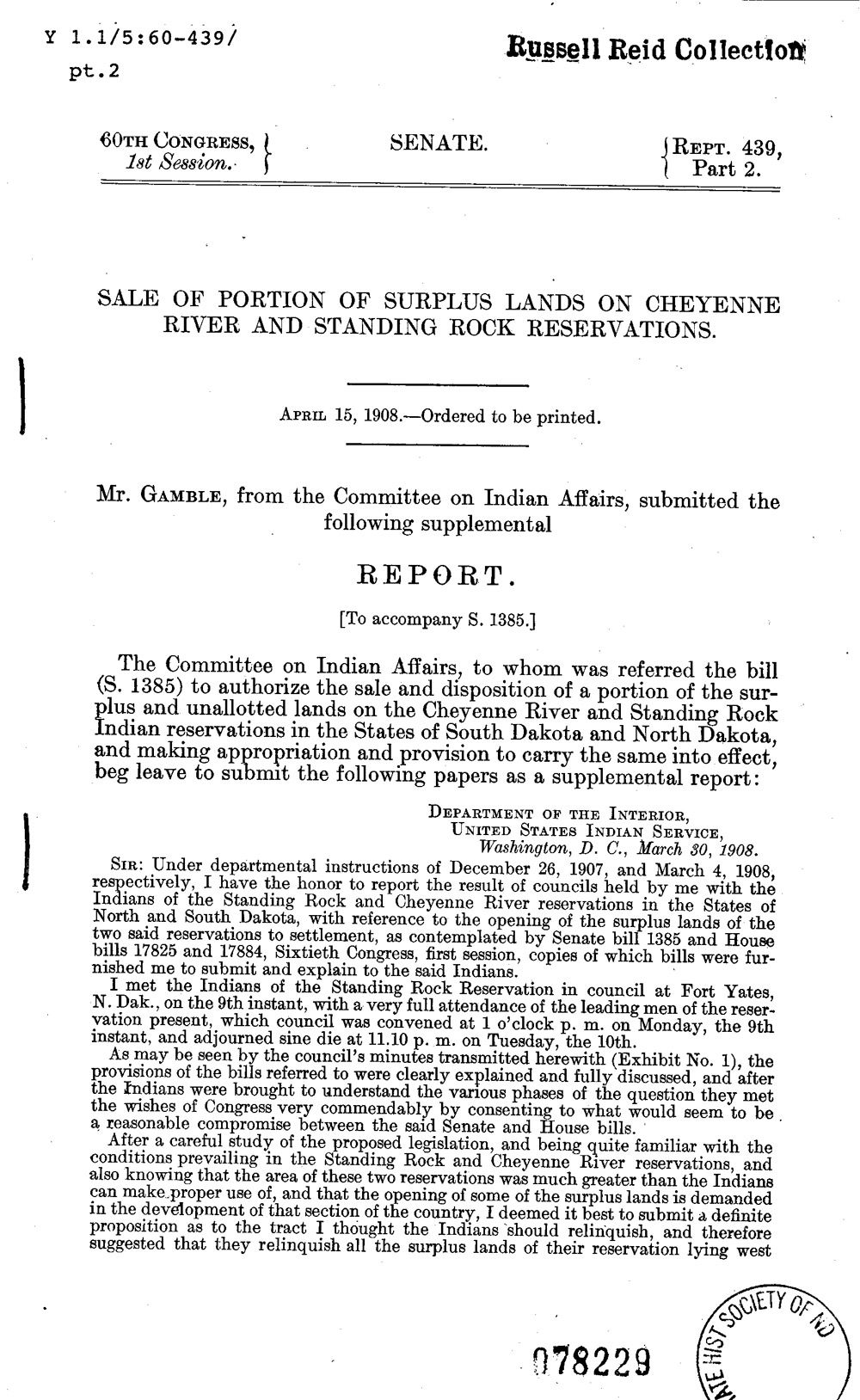
Government documents can sometimes be very difficult to understand. However, government documents can be full of interesting information. That is the case with Senate Report 439, part 2, 60th Congress, “Sale of Portion of Surplus Lands.” Below is a summary of the major points of discussion. (See Document 18: Part 1)
Major McLaughlin’s main points
- The reservation lands will be sold under a bill under consideration in Congress.
- The Lakotas and Yanktonais could not refuse to cooperate in the sale because of the Supreme Court decision in Lone Wolf vs Hitchcock.
- The Lakotas and Yanktonais could approve the sale as presented by Major McLaughlin, or offer a compromise.
- If the tribes did not agree to the proposal, they might lose more land
- The proposed bills in Congress will probably agree on 1,250,000 acres of land to open for sale.
The Council’s main points, presented by Arthur Tibbets
- The tribes will give up 29 townships (668,160 acres) in the western portion of the reservation
- The tribes believe that the value of the land will increase in time and they would benefit from holding some of it for sale until sometime in the future.
- The school lands (sections 16 and 36 in each township) will be sold to the federal government. The tribes wanted $2.50 per acre for these lands instead of the offered $1.25 per acre.
- The tribes wanted only resident members of their tribes (excluding Standing Rock residents of other tribes) to receive the benefits of these sales.
- The tribes “demanded” $10 per acre for lands to be sold under this law.
- Though some disagreed with the conclusions of the council, there was no opportunity to reconsider. Those disagreeing stated that they respected the outcome of the council and the process by which the council reached its agreement.



